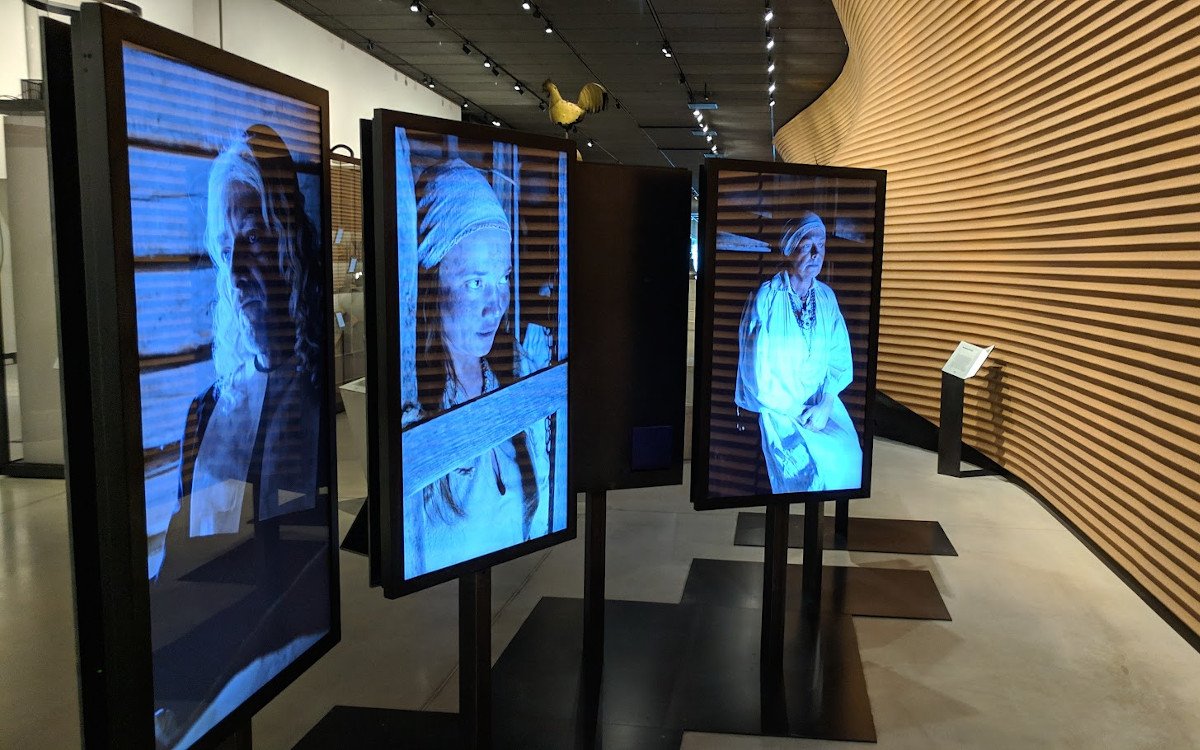Modern, interactive museum concepts make use of digital signage in many forms: often conventional displays and projectors are used, more rarely eInk displays. The Estonian National Museum in Tartu is a prime example. An experience report by Florian Rotberg.
It is winter at a former Soviet nuclear bomber base at the outskirts of Europe. Overnight temperatures have dropped to minus 20 degrees Celsius. We are in Tartu, in the far east of the European Union, 20 kilometers straight line distance from the Russian border.
A taxi driver is driving us outside the city. Still in the fog a huge building rises from the remains of the former Soviet runway. 34,000 square meters in size. You can almost smell kerosene and hear the afterburners of the MIG fighter planes. But no aircraft has taken off from this place for almost 30 years. Since 2016, the former Raadi Air Force Base has been home to the ‚Eesti Rahva Muuseum‘, the Estonian National Museum. A highlight for digital signage experts.
Estonia is making history
For a long time their culture and language did not play a major role in the everyday life of the Estonians. This is a consequence of more than 50 years of Soviet occupation – and the German occupation army. Since gaining independence in 1991, they have been working to rebuild their own society. This includes presenting their history, hence the importance of a national museum.
The Estonian National Museum, with its focus on ethnology and cultural history, aims to provide an insight into and an overview of everyday life and culture in Estonia. The museum focuses on collecting, preserving and studying materials related to the culture and history of Estonians, Estonian minorities and Finno-Ugric peoples.
The new 355-metre long building features two permanent exhibitions. The interactive exhibition „Encounters“ sheds light on the past, present and future of people; it is about their experiences, their lives and their emotions. The exhibition of Finno-Ugric peoples entitled „The Echo of the Urals“ provides information about the cultural region of the peoples living in Northern Eurasia.
In Tartu the eInk displays excel
The integration of eInk displays is unmatched. The museum uses more than 600 of these devices for an intelligent signage concept. Hence the decision to use electronic paper displays rather than LCD. Visitors can thus easily distinguish whether a display explains an exhibit or is one itself.
The easy-to-read museum labels made of electronic paper are thin and light and only consume power when the content on the screen changes. The wireless connection makes them perfect for a museum design. Works of art and artifacts remain the primary focus.
The Estonian National Museum uses 32-, 9.7- and 6-inch eInk displays from Taiwanese supplier E-Ink. As a natural complement to the infrastructure, the displays not only enhance the museum’s aesthetics, but also offer visitors a personalized experience: In the museum, each display application interacts with the RFID tickets that visitors receive. Whether Estonian, English or Russian, the electronic paper labels automatically inform visitors in their own language when they are near a display. The eInks are powered by Power Over Ethernet (POE), so the museum can be digitized in a sustainable way. Cables for power and data transfer are no longer required.
The integration of the digital exhibits is also among the finest we have seen in recent years. The NEC displays are integrated into concrete and wooden exhibits, projections blend into the lit surfaces.
Even though the Estonian university city of
Tartu is situated at the edge of Europe and
therefore out of reach for most digital signage
readers, you should visit the museum – and not just because it holds the title European Museum of the Year 2018.
Get full access to all invidis yearbook articles – it’s free!
Download the industry bible for more analysis and market data. Secure your personal copy now – it’s free of charge.

